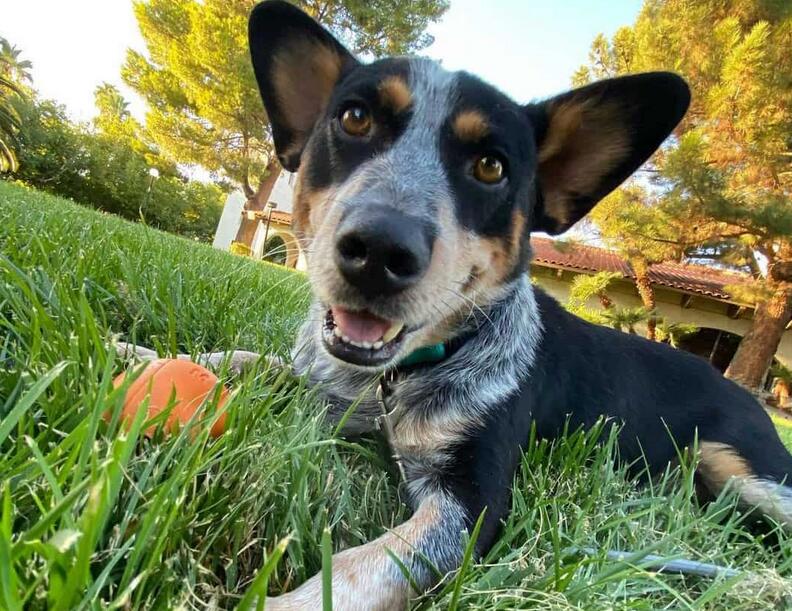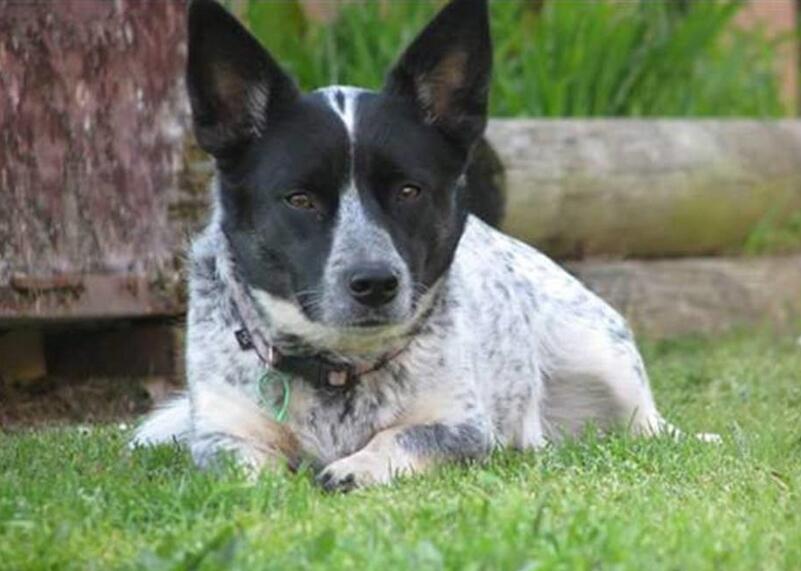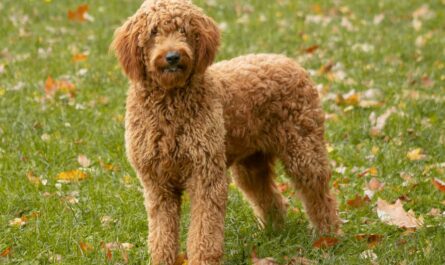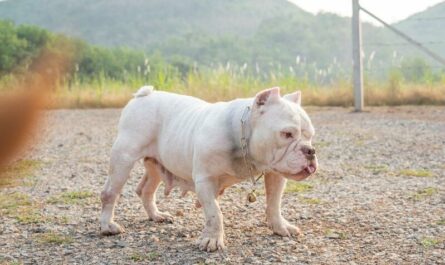The Blue Heeler Corgi mix, also known as the Cowboy Corgi or Blue Heeler Corgi, is a popular hybrid breed that combines the Pembroke Welsh Corgi and the Australian Cattle Dog. This medium-sized crossbreed has become a favorite among ranchers, equestrians, and active families looking for an intelligent, energetic companion. In this complete guide, we’ll cover everything you need to know about the unique Blue Heeler Corgi mix including their history, appearance, personality, health, and more.
History and Origins of the Blue Heeler Corgi Mix
To understand the Blue Heeler Corgi mix, it helps to learn about the background of both parent breeds that were crossed to create this hybrid dog.
The Pembroke Welsh Corgi
The Pembroke Welsh Corgi dates back over 1,000 years to Pembrokeshire, Wales where they were utilized as hardy herding dogs. Their close to the ground build allowed them to avoid kicks from cattle while their innate intelligence and trainability made them excellent workers.
By the 10th century, the Pembroke Welsh Corgi had become associated with the Welsh gentry and was even favored by royalty. Queen Elizabeth II has owned and bred Pembroke Welsh Corgis throughout her reign.
The Pembroke was recognized by the American Kennel Club (AKC) as a herding breed in 1934. Though they originated as working dogs, Pembrokes are now primarily companions and show dogs.
The Australian Cattle Dog
Also known as Queensland Heelers or Blue Heelers, the Australian Cattle Dog was developed in the 1800s to help manage cattle across the rugged Australian Outback. Their ancestry includes the Smithfield herding dog crossed with wild Dingos. This produced an agile, tough herder able to handle the climate and long distances.
The Australian Cattle Dog excelled at keeping cattle bunched together and moving in the right direction by nipping at their heels. Their name “Blue Heeler” comes from their speckled blue coats. The AKC recognized the breed in 1980.
Why Were They Crossed?
Crossing the Pembroke Welsh Corgi with the Australian Cattle Dog combines the strengths of two highly skilled herding breeds. The resulting Blue Heeler Corgi mix blends the Corgi’s innate stock sense and short stature with the Heeler’s endurance and energetic work ethic.
While they retain strong herding instincts, these hybrids are also loyal companions and active family dogs for those who appreciate their intelligence and trainability. The Blue Heeler Corgi is best suited for active owners able to provide them with regular exercise and training.

Appearance and Size of the Blue Heeler Corgi Mix
The Blue Heeler Corgi is a medium-sized crossbreed. Full grown adults typically stand 12-18 inches tall at the shoulder and weigh 30-50 pounds. However, their broad build can make them appear stockier.
Since they are a mix between two pure breeds, their appearance can vary but generally shows influences of both parent breeds:
- Medium length double coat that can be straight or slightly wavy
- Erect, pointed ears like the Corgi and Heeler
- Blue ticking or mottled color pattern from the Heeler
- Corgi’s short legs and elongated body shape
- Dark brown eyes are common
- Docked tails or full length tails can occur
The amount of shedding can vary depending on which parent they favor. Daily brushing is recommended to control loose hair. Bathing should only be done when needed.
Temperament and Personality of the Blue Heeler Corgi
The Blue Heeler Corgi is a very intelligent breed that forms a strong bond with their family while remaining wary of strangers. They are lively dogs that do best with plenty of exercise and mental stimulation.
Some key personality traits of the Blue Heeler Corgi mix include:
- Devoted and loyal to family members
- Energetic and playful
- Active minds and bodies
- Alert and observant
- Independent thinkers
- Protective instincts
- Intelligent and highly trainable
- Occasional stubbornness or wariness
Without proper socialization and training, their natural herding instincts can cause them to nip or herd at children or other pets. However, well-raised Blue Heeler Corgis get along wonderfully with kids and animals.
Though energetic, they are not hyper and can settle when properly exercised. Their affectionate nature makes them excellent companions.
Exercise and Activity Needs
The Blue Heeler Corgi is an active breed with high exercise requirements. They thrive on vigorous daily activity and lots of interactive play.
To stay happy and healthy, Blue Heeler Corgis need:
- At least 60 minutes of exercise per day, ideally more
- High intensity activities like running, hiking, agility
- Interactive games and training sessions
- Safe off-leash time to run and play
- A fenced yard or access to a dog park
- Walks, playtime, or training if unable to exercise outdoors
Without enough activity, these intelligent dogs are prone to nuisance behaviors like excessive barking or destructive chewing. They excel in dog sports and working roles.
Mentally, they need training sessions and interactive puzzle toys to engage their smart, energetic minds.
Training Tips for Blue Heeler Corgi Mixes
Blue Heeler Corgis are highly trainable dogs when handled with patience and consistency. Positive reinforcement yields the best results.
Important training areas to focus on include:
- Basic obedience – Sit, stay, come, heel commands using reward-based methods
- Socialization – Introduce them to new people, places, and animals early on and frequently
- Leash training – Teach not to pull or herd you while on walks
- Herding behavior – Redirect nipping or herding other pets
- Crate training – Helps with house training and preventing destructive behaviors when alone
- Recall – Important to train off-leash recall early for safety
Their energetic nature and working drive means they can get bored easily. Providing plenty of toys and activities makes training easier. Attending obedience classes is highly recommended.
While smart, their independent thinking can make them a bit willful. Stay patient and consistent during training.
Health Issues Common in Blue Heeler Corgi Mixes
When bred from health tested parents, Blue Heeler Corgis are generally robust, long living dogs. Still, there are a few conditions they can be prone to:
- Hip Dysplasia – Malformation of hip joints; can cause lameness and arthritis.
- Elbow Dysplasia – Abnormal growth causing pain and lameness.
- Progressive Retinal Atrophy (PRA) – Gradual vision loss leading to blindness.
- Deafness – Congenital deafness occasionally seen.
- Degenerative Myelopathy – Spinal cord disease leading to paralysis.
Reputable breeders screen breeding stock for hip/elbow dysplasia, PRA, and deafness. Puppies should undergo health checks including hip evaluations.
Providing excellent nutrition, limiting jumping, and maintaining a healthy weight can help prevent orthopedic problems. Routine vet exams and prompt treatment help manage any issues.
With good care, the average lifespan is 12-15 years. Some live into their late teens.
Nutrition and Dietary Requirements
The Blue Heeler Corgi is an energetic breed with higher caloric needs to fuel their active lifestyles. High quality food formulated for medium to large breed dogs is essential.
Key diet tips:
- High protein – Meat should be the first ingredient. Real meats like chicken, beef, turkey or fish provide amino acids.
- Complex carbs – Whole grains like brown rice give sustained energy. Limit simple sugars.
- Omega fatty acids – Found in fish oils, support skin, coat, joints, brain health.
- Glucosamine/chondroitin – Can aid joint health and prevent dysplasia.
- Calcium/phosphorus – Important for growth in puppies. Maintains strong bones.
- Portion control – Prevent obesity which strains the joints. Follow feeding guidelines.
Regular exercise is also key to preventing weight gain. Limit treats and human junk food. Provide clean, fresh water at all times.
Grooming Needs for the Blue Heeler Corgi Mix
The Blue Heeler Corgi has a medium length double coat that requires regular upkeep to stay looking its best. Expect moderate to heavy shedding.
Grooming Tips:
- Brush daily using a slicker brush to control shedding.
- Bathe only when needed using gentle dog shampoo.
- Check and clean ears regularly for infection signs.
- Brush teeth frequently with a vet-approved toothpaste.
- Trim nails as needed, taking care not to cut the quick.
- Clean face and eyes daily with a soft, damp cloth.
A grooming routine started early gets dogs comfortable with handling. For heavy shedding, bathing and brushing more frequently can help remove excess loose hair.
Is the Blue Heeler Corgi Mix the Right Dog For You?
If you’re looking for an energetic, loyal dog to join in hiking, running, training, or an active family lifestyle, the Blue Heeler Corgi can make an excellent companion. Their mix of trainability, protectiveness, and lively spirit also suits ranch life well.
This hybrid does require a commitment to providing 60+ minutes of vigorous daily exercise as well as mental stimulation through training and play. Their herding nature also benefits from socialization and training.
Prospective owners will need to invest time into proper care and be willing to manage their potential downsides like barking, wariness of strangers, and digging or chewing if under-exercised.
For those able to provide the proper lifestyle, few dogs will match the Blue Heeler Corgi’s unwavering devotion, intelligence, and companionship. Their unique mix of parent breed traits continues to make them popular among the equestrian set and active families.






